Snowbirds
2 November 2011 | Extracts, Non-fiction
The short winter days of the northerly latitudes are made brighter by snow cover, which almost doubles the amount of available light. Reflection from the snow is an aid for photographers working outdoors in winter conditions. A new book, entitled Linnut lumen valossa (‘Birds in the light of snow’), presents the best shots by four professionals, Arto Juvonen, Tomi Muukkonen, Jari Peltomäki and Markus Varesvuo, who specialise in patiently stalking the feathered survivors in the cold
The photographs and texts are from the book Linnut lumen valossa (‘Birds in the light of snow’, edited by Arno Rautavaara. Design and layout by Jukka Aalto/Armadillo Graphics. Tammi, 2011)
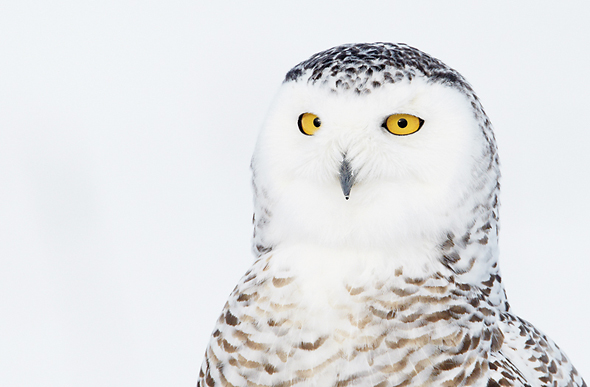
Snowy owl. Photo: Markus Varesvuo, 2010
Markus Varesvuo
Birds of prey have incredibly sharp eyesight. I have had the opportunity to watch the snowy owl (Bubo scandiacus) hunt in both its summer nesting habitats and on wide expanses of snow in the winter. According to my own observations, a snow owl can spot a small rodent at a distance of almost half a kilometre. (Montreal, Canada 2/2010. 800 mm+1.4x teleconverter, F11. 1/200 s, ISO 800)
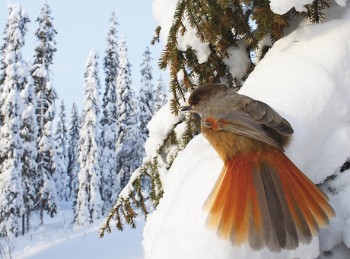
Siberian jay. Photo: Markus Varesvuo, 2010
The Siberian jay (Perisoreus infaustus) is a sympathetic, curious and fearless bird.
Using a remote shutter release and a wide-angle lens, I managed to take a close-up photo of a Siberian Jay that gives its winter habitat a strong presence.
(Kuusamo region, Finland, 2/2010. 24 mm, F11. 1/250 s, ISO 800)
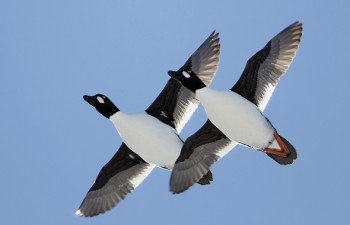
Goldeneyes. Photo: Markus Varesvuo, 2011
The sun shining in the blue sky, ice and glimmering crusted snow provide the best light possible for photographing birds in flight.
In this picture, the details of the lower body of male goldeneyes (Bucephala clangula) are shown in a fine manner and the blue of the background can be exposed to the correct dark shade.
(West Turunmaa region, Finland 3/2011. 800 mm + 1.4x teleconverter, F8, 1/1000 s, ISO 400)
Jari Peltomäki
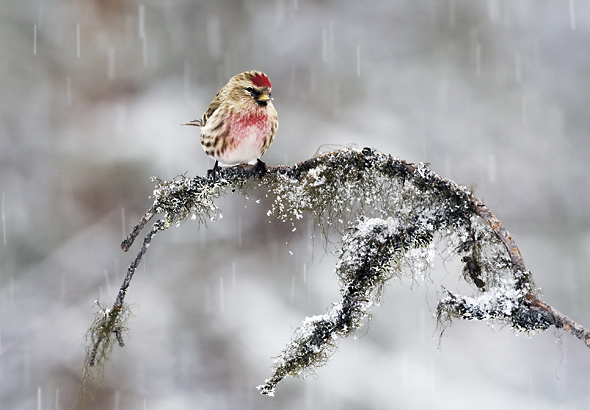
Common redpoll. Photo: Jari Peltomäki, 2011
The common redpoll (Carduelis flammea) is an active visitor at winter feeding stands for birds. This male descended on a branch in picturesque snowfall, seen as long streaks in the photographs, because of the long exposure.
(Inari, Finnish Lapland 3/2008. F11, 1/60 s, ISO 400)
Tomi Muukkonen
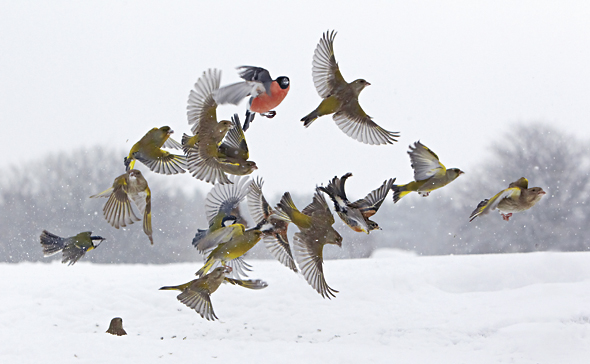
Brambling, greenfinch, bullfinch, great tit. Photo: Tomi Muukkonen, 2011
The brambling (Fringilla montifringilla), the greenfinch (Carduelis chloris) the bullfinch (Pyrrhula pyrrhula) and the great tit (Parus major). After buying his first camera, a friend of mine took impressive photos of small birds taking flight from a feeding stand. His pictures of hawfinches and other passeriformes were on my mind for years, until I was finally able to interpret this theme in my own way.
(Saarenmaa, Estonia, 2/2010. 95 mm, F8, 1/4000s, ISO 1600)
Arto Juvonen
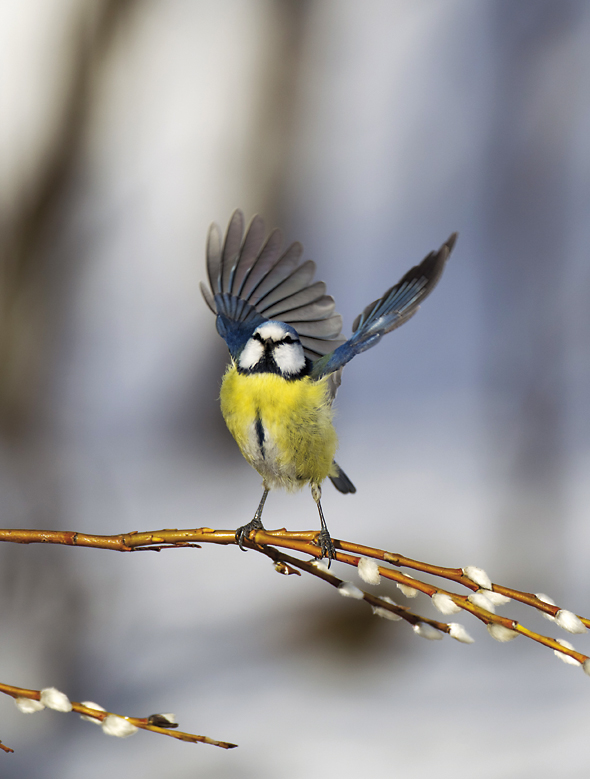
Blue tit. Photo: Arto Juvonen, 2011
Winter will soon be over; the catkins tell of late winter days that are rapidly becoming longer. In late March, however, winter still extends its grasp, but the blue tits (Parus caeruleus) are in spring mode, singing and showing interest in nesting boxes, and with guests at the feeder starting to disperse themselves through the woods. The strong and lucky individuals have managed to survive a hard winter.
(Loviisa, Finland 3/2011. 500 mm, F4, 1/3200 s, ISO 1600)
Translated by Jüri Kokkonen
Arto Juvonen (born 1957), Tomi Muukkonen (born 1958), Jari Peltomäki (born 1965) and Markus Varesvuo (born 1960) maintain webpages (also in English) and have won many prizes in both Finnish and foreign competitions in nature photography.
Tags: animals, Finnish nature, photography
1 comment:

10 February 2014 on 1:41 pm
Awsome images, often conveying a lot of feeling. Thank you.